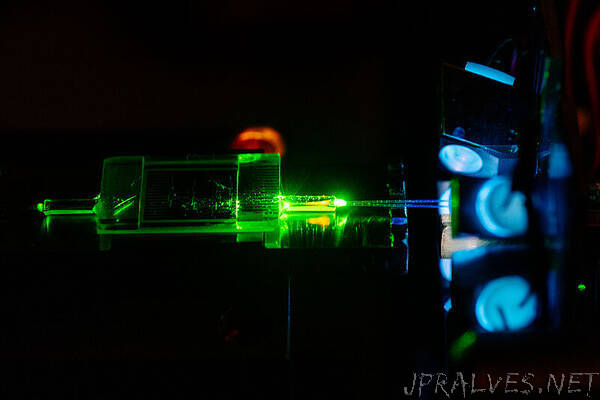
“Paderborn researchers publish their results in a specialist journal
The development of quantum computing means that the use of classic cryptography for secure communications is in danger of becoming obsolete. Quantum cryptography, on the other hand, uses the laws of quantum mechanics to ensure total security. One example of this is quantum key distribution, which enables two parties to secure a message via a random secret key. This is generated by quantum particles, generally photons. To achieve this, researchers are increasingly making use of an alphabet based on particular characteristics of light particles (‘photons’), namely their colour composition. However, previously no equipment had been created to decode the information again. Researchers at Paderborn Universities have now developed such a decoder and have published their results in the specialist journal ‘PRX Quantum’.
‘Quantum key distribution protocols using binary code are widespread. However, their security and efficiency could be improved by using a larger alphabet for coding. This involves using what are known as temporal pulse modes in which information is coded into photons’ colour composition. A key distribution system using this method requires a multi-channel decoder able to “read” every letter of an alphabet at once. No such device had previously been created’, explains Dr. Benjamin Brecht, a physicist at Paderborn University.
Paderborn’s researchers have now developed a multi-output quantum pulse gate (mQPG). It separates the incoming letters into various output colours that the physicists can identify using a spectrometer. They have also demonstrated a complete, high-dimensional mQPG-based decoder that enables encryption protocols based on individual photons. ‘The versatility of mQPG makes it a valuable resource for numerous applications in quantum communications, and also opens up other opportunities for all technologies based on temporal modes’, Brecht notes.
The research was funded by the Federal Ministry of Education and Research (BMBF) as part of the QuantERA project ‘QuICHE’, of which Paderborn University is a part.”
